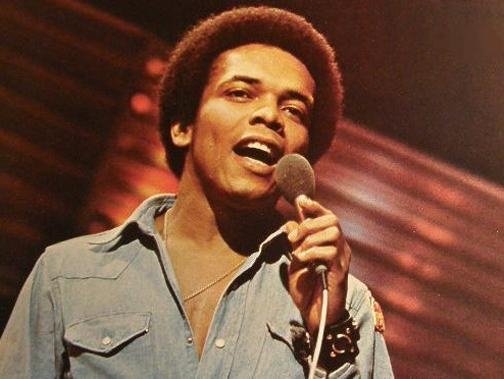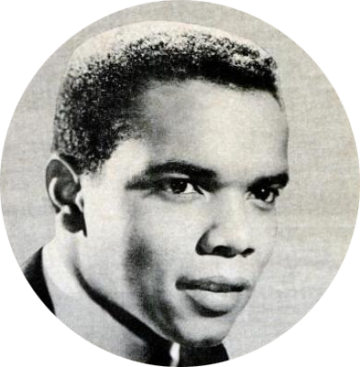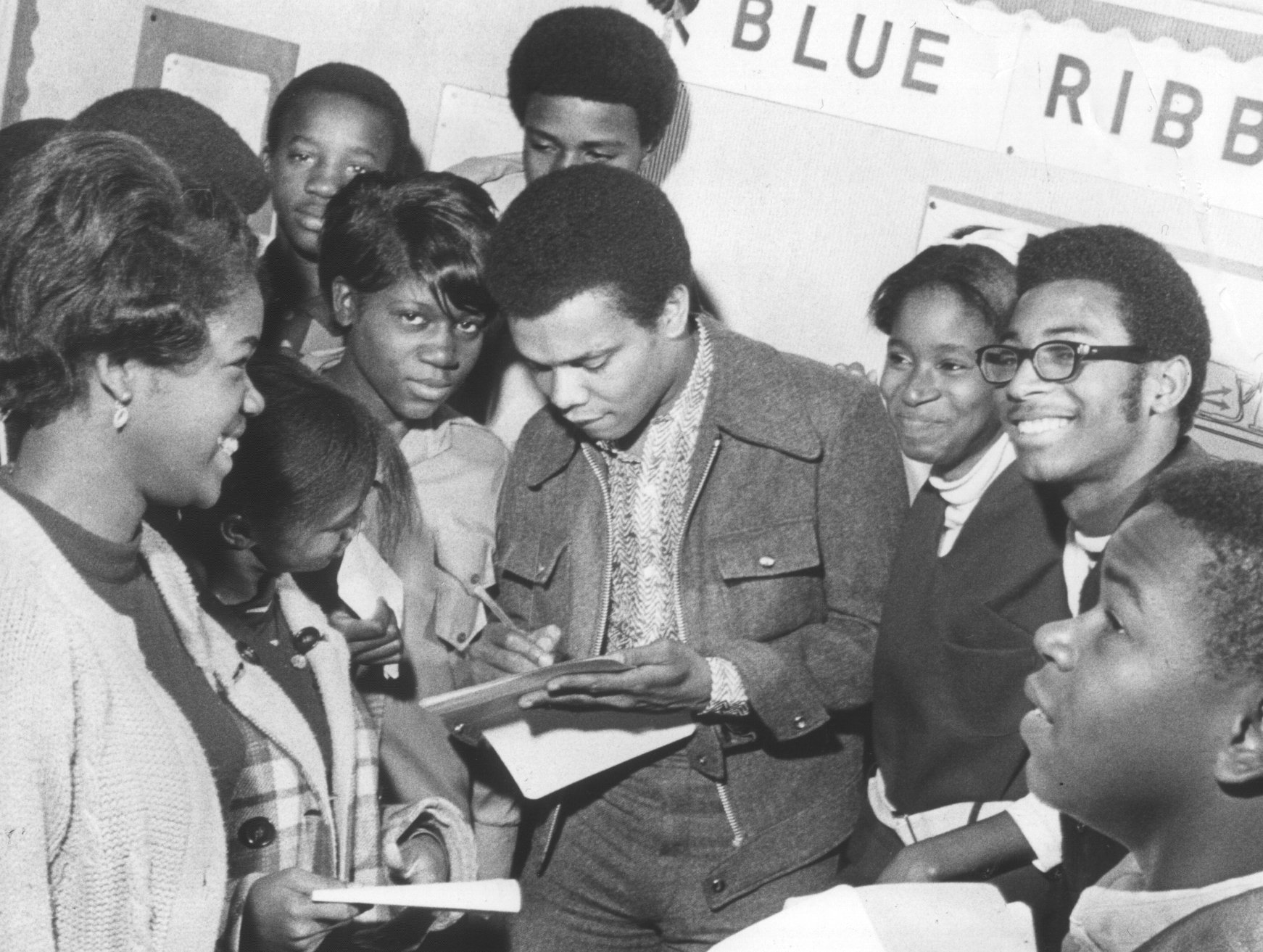
Why the Rock and Roll Hall of Fame Needs Texan Johnny Nash
The “I Can See Clearly Now” singer was much more than a one-hit wonder.
Years ago as music editor for the Houston Press, I compiled a list of the top 100 songs with strong associations to Houston—songs about the Bayou City or songs written or performed by Houstonians. I placed Johnny Nash’s 1972 megahit, “I Can See Clearly Now” near the top of that list, saying:
Big Pharma should bottle this song and sell it; shrinks should prescribe it to all those who have the blues. This is one tune with optimism enough to put Prozac out of business. The pop-reggae gem passes like a giant sigh of relief; it’s plain from the hard-won calm obvious in Nash’s angelic, Sam Cooke-style tenor that he has indeed been truly delivered from some very dark places.
At the time, I wrongly believed Nash to be a one-hit-wonder with a couple of strange footnotes to his career. I’d learned, for example, that the native Houstonian had somehow became acquainted with Bob Marley years before Marley became the Elvis-Dylan combo of the Global South.
But after Nash’s death in 2020, when I told his story as a serial for Houston’s 5Corners.org, it dawned on me that Nash’s contribution to musical culture was truly immense.
Nash recorded many hits—several almost as big as “I Can See Clearly Now.” And more than a mere acquaintance, Nash played a major role in Marley’s life and career, landing him the record contract that made both Marley and reggae internationally famous.
The man was a worthy candidate for the Rock & Roll Hall of Fame, I thought. But when I dug deeper, I discovered that Nash’s name had never even made the ballot. What? Many a singer of lesser talent and track record have already been honored, though many made no real lasting contribution to music beyond their own work. Why, then, has Nash’s unique combination of hitmaker and epic talent scout been overlooked? To me, that Nash is not already in the Rock and Roll Hall of Fame is a crime. That he has never made the ballot is a sin—an error I’d like to persuade the nominating committee to fix.
Bob Merlis, a former senior vice president for the Warner Brothers publicity department and former member of the Rock and Roll Hall of Fame Nominating Committee agrees. “Of course Johnny Nash deserves to be in the Rock and Roll Hall of Fame,” said “He could, plausibly, be in more than one Hall of Fame in light of the fact that his career was the very definition of the hackneyed term ‘multi-faceted.’”
Nash had many remarkable achievements in a career spanning three decades (or four if you count Jimmy Cliff’s 1993 remake of “I Can See Clearly Now” for the Jamaican bobsled team movie Cool Runnings).
Already by the late 1950s, Nash had risen from singing caddy at Houston’s Hermann Park golf course to KPRC TV star—perhaps the first Black entertainer regularly programmed locally in Houston. He then gained national fame as one of Arthur Godfrey’s stable of singing teens.
That led to a record deal in his first musical incarnation: a smooth Johnny Mathis-style balladeer, crying in his Coca Cola over a teenage crush gone south in one smoky torch song and crooning “let’s get lost, lost in each other’s arms” in another. Both songs were recorded on the ABC-Paramount label and under the musical direction of future Frank Sinatra bandleader Don Costa.
His early hits led Nash to a leading role in the film Giant Steps, beating out the male lead from the New York playhouse version, Lewis Gossett Jr.
Nash came to be known as “America’s First Black Teen Idol.” Through records and frequent appearances on “Johnny Carson’s Tonight Show,” “Merv Griffin,” “Mike Douglas” and “American Bandstand,” Nash became familiar to 1960s White America, but in Black America, his had been a household name longer, and a mainstay in the gossip columns of African-American newspapers. Who is Johnny Nash dating? What zodiac sign is Johnny Nash? When is his next record coming out? When might he be bringing his music and charisma to my town?
Somehow in all that, Nash found time in 1962 to perform the opening theme for the cartoon series “The Mighty Hercules”: “Softness in his eyes, Iron in his thighs, Virtue in his heart, Fire in every part, Of the Mighty Hercules.” Despite its primitive animation and slipshod production, the show, which aired from 1962-1966, became a cult classic, partly because of Nash’s exuberant performance.

Nash then graduated from his cocktail pop-jazz incarnation and enjoyed a string of R&B hits, culminating in his 1965 song, “Let’s Move and Groove Together,” which builds off a lyrical nod to the Sir Douglas Quartet’s “She’s About a Mover” to one of his trademark, angelic Sam Cooke-like vocal crescendos.
Had Nash simply stayed in that 1960s soul groove, there’s little doubt he would have been inducted in the Rock and Roll Hall of Fame long ago. It’s a near certainty his soul hits would have piled high. Instead, Nash went to Jamaica and stayed abroad innovating and experimenting for years.This was no vacation—merely a change of venue for these music men, who already were collaborators in a record label called JAD Recordings.
Once in Kingston, Nash and his business partner Danny Sims were lent a house in the hills by a business associate—Ken Khouri, Jamaican owner of the island recording studio, Federal. And it was at Federal in 1965 that a singer named Hopeton Lewis recorded a song called “Take It Easy,” thus easing Jamaican music out of the fast-paced and horn-heavy ska sound and into a more bass-driven, relaxed pace that came to be known as rocksteady, the predecessor to reggae.
Ken’s son Paul began teaching Nash the basics of rocksteady and through their friend Neville Willoughby, a Kingston DJ, Nash began sampling local nightlife. On Ethiopian Christmas—January 7, 1967—Willoughby took Nash to a Rastafarian musical and religious event known locally as a “groun’ation,” hosted by an elder statesman of the faith named Mortimo Planno.
Planno’s home in Marley’s soon-to-be-famous Trench Town neighborhood was ground zero for disaffected ghetto youth and rebellious uptown college kids, all drawn to Planno’s salon-like haven full of books on African history, Rastafarianism, and anti-colonial Black Power. It was there Nash first encountered Marley. As Sims later told reggae scholar Roger Steffens: “That night, Johnny came home raving about this guy he had met named Bob Marley. He said every song he heard him sing was an absolute smash and that we should sign him immediately to our label. The next day Bob came to our house with his wife, Rita, and Bunny Livingstone and Peter Tosh, along with Planno. Bob played guitar and sang about 30 songs for me.”
And so began a five-year or so friendship and professional relationship that would end with Nash and Sims selling Marley’s recording contract to Jamaica-based record producer Chris Blackwell, an Englishman who would go on to make Marley famous and popularize reggae worldwide.
At his 2001 Rock and Roll Hall of Fame induction speech, Blackwell was credited as “the single person most responsible for turning the world on to reggae music.”
Well, what about Nash? What if Nash had never introduced Blackwell to Marley? Could Blackwell have done it without charismatic Marley leading the way? Or would reggae otherwise remain an obscure genre loved by world music aficionados only?
Things were never quite the same after Nash recorded in Kingston, Merlis says. It can be argued that had not Nash scored a hit with “Stir It Up,” written by Bob Marley, “the latter might not have emerged as he did as reggae’s standard-bearer.”
Perhaps competitors, Jimmy Cliff, Toots & the Maytals, and others could have enabled reggae and rocksteady to conquer the world without Marley. But maybe that would have happened without Marley, had Nash not found him first.
Meanwhile, Nash was in the studio making his own music with Jamaican musicians. Most notably, he recorded the 1968 top-ten hit “Hold Me Tight,” the first true reggae song to chart in America and the U.K. Somehow, this song seems forgotten today—which is a shame, because it is almost as wonderfully smile-inducing as “I Can See Clearly Now.” Culturally, it’s a true landmark record fusing U.S. and Jamaican traditions that unfortunately too many casual scholars of pop history wrongly believe to be Paul Simon’s “Mother and Child Reunion” or Eric Clapton’s “I Shot the Sheriff.”
No, Johnny Nash beat them both. Part of the reason his 1968 song is overlooked is that Nash was so far ahead of Simon and Clapton—a full four years ahead of Simon and six ahead of Clapton. It’s funny—“rocksteady” music, “Hold Me Tight’s” particular strand of reggae was on the verge of going out of style when Nash recorded it. By the time Simon got to “Mother and Child Reunion,” that style was already stale in Jamaica.
Nash then went on to his crowning achievement, “I Can See Clearly Now” in 1972. It’s a song that attains a higher plane, one akin to Louis Armstrong’s “What a Wonderful World,” Sam Cooke’s “A Change is Gonna Come,” or the Beatles’ “Yesterday.” It transcends the sum of its parts, gorgeous as those parts may be, and enters the realm of … yeah, I guess celestial will do.
A few smaller hits followed in the early ’70s, including “Stir It Up,” the Marley-penned sexual anthem that as Merlis said put Marley on the map.
Not long after, Nash walked away. There’s no real compelling story there. No tragic tale of addiction or sudden poverty. On the contrary, Nash had been raised a Boy Scout and had been a sharp businessman. He just felt like he’d accomplished what he’d set out to do as a performer and chose to come home to Texas. He’d sing in church and mentor young singers, but never performed live in a concert venue again. He declined all interviews. An avid horseman, he opened a small rodeo arena on Houston’s semi-rural south side before converting it into a BMX course and later shutting down.

Perhaps that long slow fade-out is why Nash never made the Hall of Fame. There was no publicist keeping his name out there, and the man himself worked hard to protect his privacy.
Or perhaps Nash’s greatness has gone unrecognized because he had hits in three distinct styles of music—pop-jazz, soul, and reggae. Voters seem to prefer a stack of hits in a single genre.
Or perhaps he was simply too far ahead of his time to get the credit he deserved for bringing reggae to America, and it takes digging to divine that Nash was the first non-Jamaican to discover Bob Marley.
Some, like Bill Bentley—former Warner Brothers publicity head, former member of the nominating committee, and native Houstonian—believe that Nash’s taste for variety should speak in his favor.
“He always went for the deepest part of a song, and if he had to go to Jamaica to find it that’s where he went,” said Bentley, who also loves him as a fellow Houstonian. “The way he could take the words of someone like Bob Marley and then make them his own was never equaled. And, maybe best of all, he always remembered where he was from—and was proud of it. A finer Houstonian there has never been. Johnny Nash is The Man.”
Many Rock Hall of Fame inductions have been built on far skimpier resumes. Yes, “When a Man Loves a Woman” is a great song, but can you name another by Percy Sledge? Can you name even the one hit song by Frankie Lymon, Nash’s 1950s rival as a Black teen idol? And yet both Sledge and Lymon are in the Hall of Fame—and Nash is not. I could go on citing the inferior credentials of dozens more, but in the end, this shouldn’t be a bitter screed
Instead of dragging others down, I’m just going to state that Johnny Nash, the kid from Houston’s Third Ward who went from singing caddy to teen idol to pop superstar and world music pioneer simply belongs in that Hall of Fame in Cleveland. I argue that he should be recognized as a truly gifted performer who made contributions in more than one musical genre, though he could qualify for his signature song alone.
So in the spirit of that immortal song, consider this an effort to remove all obstacles in his way and to remove the dark clouds that seemed to have blinded Hall of Fame voters to Nash’s brilliance.



